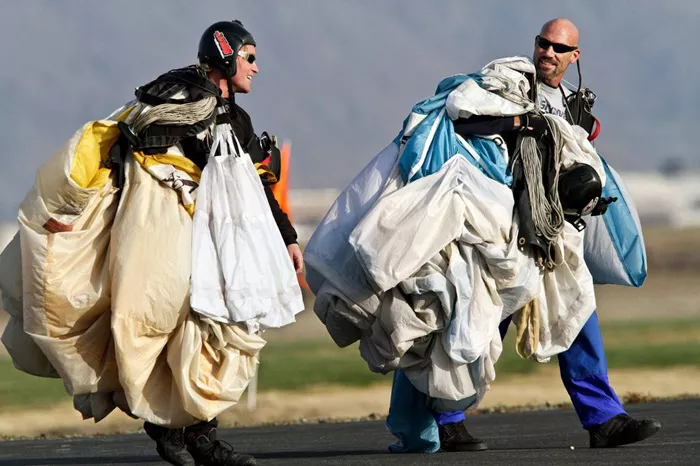Skydiving is often seen as the ultimate thrill, offering adrenaline junkies the chance to leap from an aircraft and experience freefall. However, like any extreme sport, it comes with inherent risks. Understanding the causes of skydiving deaths is crucial for improving safety measures and educating jumpers. This article will delve into the various factors contributing to fatal incidents in skydiving, aiming to provide a comprehensive overview of safety considerations.
Overview of Skydiving Risks
The Nature of Skydiving
Skydiving involves jumping from an aircraft, typically from altitudes between 10,000 and 15,000 feet, followed by freefall and parachuting to the ground. The thrill of the sport is accompanied by risks that require rigorous safety protocols and comprehensive training.
Statistical Context
According to the United States Parachute Association (USPA), the number of skydiving fatalities has been on a general decline, thanks to improved safety equipment and training. However, the risks persist, and understanding the causes of accidents can help reduce the likelihood of fatalities.
Common Causes of Skydiving Deaths
Equipment Failure
One of the most critical factors in skydiving fatalities is equipment failure. This category includes issues such as parachute malfunctions, reserve parachute failures, and problems with harnesses.
Parachute Malfunctions
Parachute malfunctions can occur for various reasons, including:
- Deployment Issues: The main parachute may fail to deploy correctly due to improper packing or a malfunctioning deployment mechanism. This can lead to a freefall without a parachute, resulting in fatal outcomes.
- Line Entanglement: After deployment, the parachute lines may become tangled, leading to an unstable descent. This situation can result in loss of control and a crash landing.
Reserve Parachute Failures
Reserve parachutes are designed to be used in case the main parachute fails. However, failures can occur due to:
- Improper Maintenance: If reserve parachutes are not inspected and maintained regularly, they may fail when needed most.
- Incorrect Deployment: In a panic situation, a jumper might not deploy the reserve parachute correctly, rendering it ineffective.
Human Error
Human error is another leading cause of skydiving fatalities. Factors contributing to this category include:
Inexperience
Inexperienced jumpers may not fully understand the risks involved or the proper procedures to follow. Common mistakes include:
- Failure to Follow Protocol: Skipping safety checks or not adhering to jump plans can result in dangerous situations.
- Inadequate Training: Jumpers who have not undergone sufficient training may not be prepared for unexpected challenges during a jump.
Poor Decision-Making
Jumpers may make poor choices influenced by external factors, such as:
- Weather Conditions: Ignoring unfavorable weather conditions, like high winds or thunderstorms, can lead to dangerous jumping scenarios.
- Distractions: Focusing on filming or social media during a jump can distract from crucial safety measures.
Environmental Factors
The environment plays a significant role in skydiving safety. Various environmental factors can lead to accidents, including:
Weather Conditions
Skydiving should only be conducted under optimal weather conditions. Risks associated with adverse weather include:
- Wind Shear: Sudden changes in wind speed and direction can cause unexpected turbulence during descent.
- Visibility Issues: Poor visibility can make it challenging for jumpers to locate landing zones or assess landing conditions.
Terrain
The type of terrain where a jumper lands can also be a factor in accidents. Risks include:
- Unfamiliar Landing Zones: Landing in unknown areas may lead to collisions with obstacles or difficult terrain.
- Urban Areas: Jumping in urban environments increases the risk of hitting buildings or power lines.
Training and Safety Measures
Importance of Proper Training
Proper training is essential for reducing the risks associated with skydiving. Comprehensive training programs cover:
- Equipment Familiarization: Understanding the functions and maintenance of parachutes and safety gear.
- Emergency Procedures: Learning how to handle malfunctions and deploy reserve parachutes effectively.
Regular Safety Checks
Safety checks are crucial for both equipment and jumpers. Regular inspections ensure that:
- Parachutes are Packaged Correctly: Proper packing techniques can significantly reduce the risk of deployment issues.
- Gear is Maintained: Regular maintenance of equipment can prevent failures during jumps.
Advanced Safety Protocols
Implementing advanced safety protocols can further reduce risks. This includes:
- Use of Automatic Activation Devices (AAD): AADs automatically deploy the reserve parachute if the jumper does not do so at a certain altitude.
- Weather Monitoring Systems: Utilizing advanced technology to monitor weather conditions can help in making informed decisions.
see also: Is Parasailing Safer Than Skydiving?
Conclusion
While skydiving remains one of the most thrilling adventures available, it is crucial to understand the causes of fatalities in the sport. Equipment failure, human error, and environmental factors play significant roles in incidents. By prioritizing safety measures, proper training, and awareness of conditions, the risks associated with skydiving can be significantly minimized. Ultimately, informed jumpers are safer jumpers, and understanding these risks is essential for enjoying this exhilarating activity responsibly.
FAQs:
What is the most common cause of skydiving deaths?
The most common causes include equipment failure and human error, such as inexperience and poor decision-making.
Are skydiving fatalities increasing or decreasing?
Skydiving fatalities have generally been decreasing due to improved safety measures and equipment, but risks still persist.
How can I ensure my safety while skydiving?
To ensure safety, participate in thorough training, follow safety protocols, and stay informed about weather conditions before jumping.
What equipment should I check before a jump?
Always check your main parachute, reserve parachute, harness, and any automatic activation devices before every jump.
related topics:
- Skydiving VS Paragliding: Which is more Safer?
- Scuba Diving vs. Skydiving: Which Is Safer?
- 4 Best Skydiving Helmets for Safety and Performance

